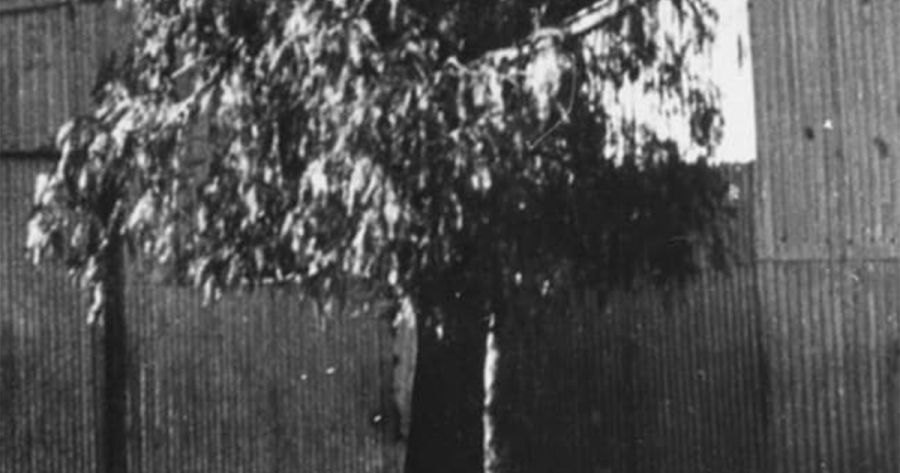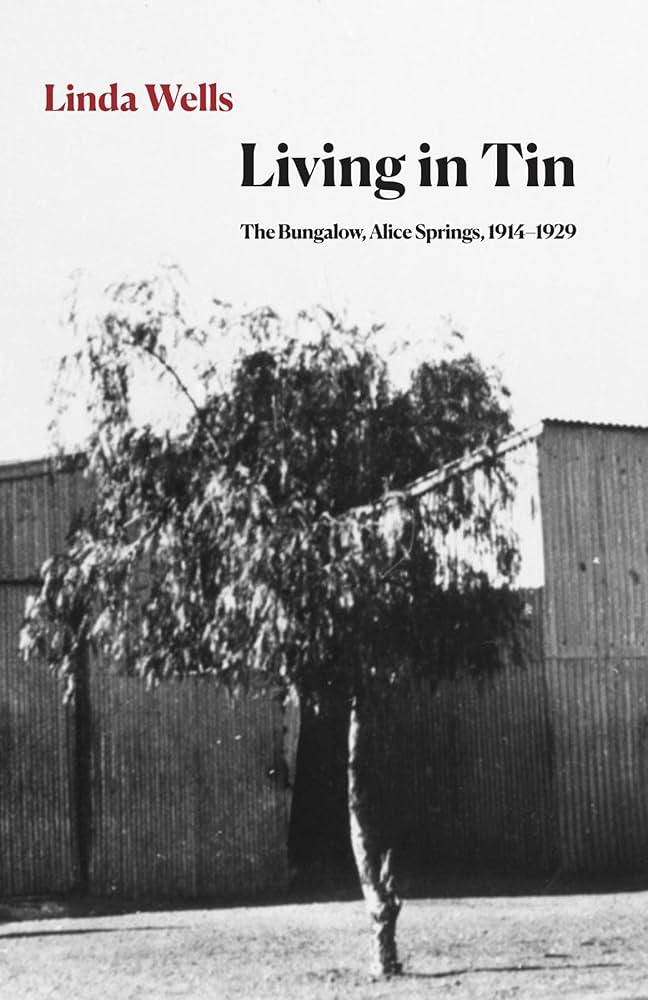
- Free Article: No
- Contents Category: History
- Review Article: Yes
- Article Title: History’s shrapnel
- Article Subtitle: Telling the Mpwartne past
- Online Only: No
- Custom Highlight Text:
The ‘bungalow’ of Living in Tin’s subtitle was a rough tin shed, erected in Mpwartne (Alice Springs) in 1914 to house Aboriginal children of mixed descent. Described by one observer as ‘a place of squalid horror’, it was managed first by Arabana woman Topsy Smith, and then placed under the supervision of a white matron, Ida Standley. The two women ran the Bungalow until 1929 but the institution survived until 1942. At least one hundred children were housed in the Bungalow over its lifetime, sleeping on the dirt floor of one room with no doors or windows, provided with meagre rations and only the most basic education.
- Book 1 Title: Living in Tin
- Book 1 Subtitle: The Bungalow, Alice Springs, 1914-1929
- Book 1 Biblio: Ginninderra Press, $40 pb, 260 pp
- Book 1 Cover Small (400 x 600):

- Book 1 Cover (800 x 1200):

- Book 1 Readings Link: https://www.readings.com.au/product/9781761095160/living-in-tin--linda-wells--2023--9781761095160#rac:jokjjzr6ly9m
Linda Wells lived for three decades in Mpwartne and has long been fascinated by the history of Alice Springs. For ten years, she ran a walking tour through the town. Completing a PhD on the Bungalow, she chose not to write a straightforward history, but creative non-fiction, or what she calls ‘fictocriticism’. In this book she presents the findings of her research, alongside reflections on her own experience, poetry, and speculative reconstructions of what might have happened in the gaps between historical records.
Wells has done extensive archival research and interviewed descendants to construct the first detailed history of the Bungalow. She provides vivid portraits of many of the people associated with the institution: Smith and her extended family; Standley, her wayward husband George and his Aboriginal children; Sergeant Robert Stott, the policeman who enforced colonial law in the town; and many of the children who ended up ‘living under tin’. Wells places these individual stories within the broader history of the institution, which was established as an emergency response to Smith’s need for housing with her children but was quickly incorporated into the genocidal system of Aboriginal child removal.
The resulting account undoubtedly contributes, as Wells intends, to ‘understandings of the Bungalow and the formative years of Central Australian history’. The Bungalow provides a powerful example of the violence of colonisation, the gendered roles that white men and women played (and play) in this violence, and the way that Indigenous children were (and are) so often the focus of this violence. Wells also narrates the lives of a number of the children, drawing on both the archival record and descendants’ memories, to portray powerful stories of courage, resistance, and survival in the face of this violence.
I am, however, less enthusiastic about Wells’s method of ‘fictocriticism’. Wells reflects (often critically) on her own experience as a white woman living in contemporary Mpwartne and researching this history. She also imagines the inner lives of the historical persons about whom she is writing. A significant risk of such an approach – even for an author such as Wells, who is alert to ethical concerns – is that it gives equal space to the inner lives of colonisers and the structural and physical violence meted upon Indigenous people. Towards the end of this book, Wells recounts the time that Smith, whose physical and emotional labour sustained the Bungalow children for nearly two decades, was ‘flogged in the dust’ by Stott as she desperately tried to stop him forcibly removing her own children. In the face of such facts, must we really pay further attention to the inner lives of those who perpetrated or were complicit in such atrocities?
Wells thoughtfully articulates her own positionality as a white woman and an ‘informed outsider’ to histories of Mpwartne and colonisation. She is less explicit about the power relations involved in constructing histories of colonisation, to which Indigenous people have repeatedly drawn attention. For example, she writes enthusiastically about her experience of archival research, praising the demanding rules and processes that surround access to archival sources: ‘Here the shrapnel that can take us to our history is treated with the value and respect it deserves.’ Yet, Indigenous scholars and practitioners such as Natalie Harkin, Blaze Kwaymullina, and Nathan Mudyi Sentance have written at length about the colonial nature of archives and the way that these ‘protections’ act as filtering devices. Archival institutions offer relatively easy access for white researchers like Wells, while often being impassable for Indigenous people whose personal and family stories are locked in archival vaults.
This in turn raises the question of who controls the interpretation and dissemination of such sources. In one chapter, titled ‘This is how Freeman do to me’, Wells discusses sexual assaults against girls by one of the staff members at the Bungalow. In the archives, Wells accessed the letters and witness statements written by the survivors of these assaults and she publishes them in their distressing detail. At the end of this chapter, Wells quotes a descendant of one of the survivors, whom she interviewed for the book. Yet it is not clear whether this descendant – or the other descendants whom Wells interviewed – had any say over whether the archival sources were published or how their parents’ and grandparents’ stories were told. Of course, Wells may indeed have consulted with families, not just to record their memories but also to invite their partnership or recognise their authority in shaping this account. However, the nature of these relationships is not made visible in her account.
In highlighting these concerns I do not dismiss the value of this work for understanding the history of Mpwartne, or colonisation more broadly. Nor do I – as a white historian myself – suggest that there is no place for non-Indigenous people in writing the history of colonisation. However, without further attention to the unequal structural realities within which histories are currently produced and active efforts to undo these (through strategies such as the return of archival sources, co-authoring of histories, and accountability to Indigenous descendants and communities), self-reflection can only take us so far.


Comments powered by CComment